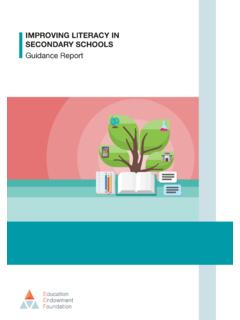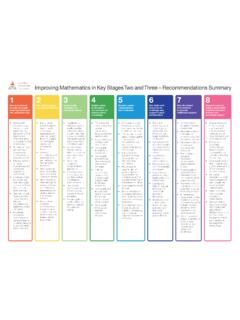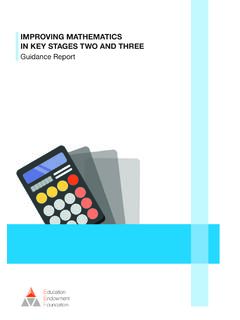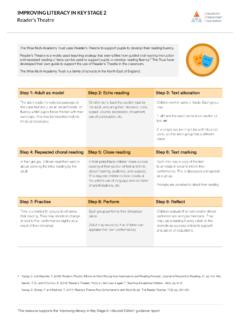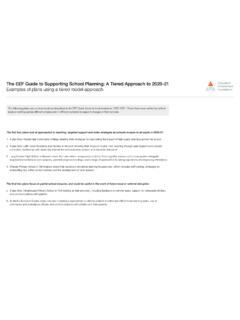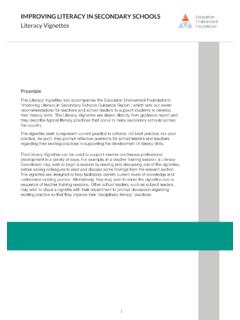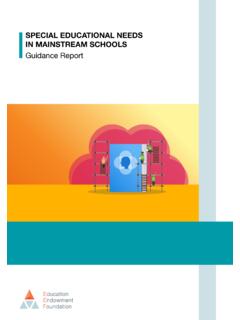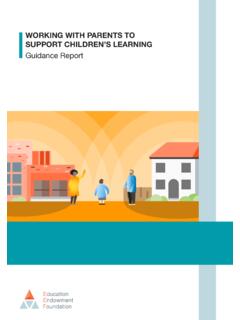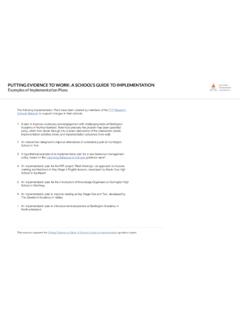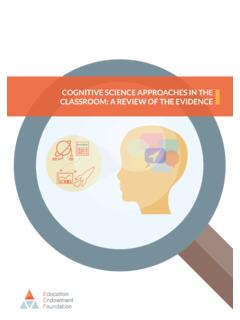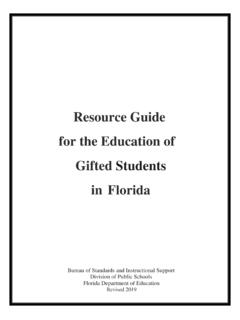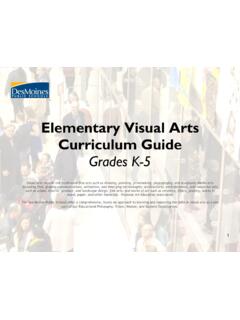Transcription of WHAT MIGHT THE CONTENT OF EFFECTIVE FEEDBACK LOOK …
1 WHAT MIGHT THE CONTENT OF EFFECTIVE FEEDBACK LOOK LIKE IN THE CLASSROOM? FEEDBACK more likely to move learning forwardLess likelyTa s kSubjectSelf-regulation strategiesPersonal FEEDBACK focused on improving a specific piece of work or specific type of task. It can comment on whether an answer is correct or incorrect, can give a grade, and will offer specific advice on how to improve learning. FEEDBACK targets the underlying processes in a task, which are used across a subject. The FEEDBACK can, therefore, be applied in other subject tasks.
2 FEEDBACK is focused on the learner s own self-regulation. It is usually provided as prompts and cues and aims to improve the learner s own ability to plan, monitor, and evaluate their learning. About the person. It may imply that pupils have an innate ability (or lack of) and is often very general and lacking in examplesIn maths, pupils have been asked to order objects from lightest to heaviest. The teacher explains to one child: You re nearly there, but two of these are the wrong way around.
3 Can you use the balance scales again and see which object is really the heaviest? In English, a pupil is struggling with letter formation. The teacher discusses this with them: Let s just look at how you are writing your d s. Can you see you have started at the top and gone down and done a loop? Remember we start writing a d by doing a letter c shape. Let s try that again. In art, pupils are painting self-portraits. The teacher is helping children to practice completing activities in a given time.
4 He explains: At the end of today I m going to put the portraits up for our exhibition, so we need to think about finishing in the next 15 minutes do you think you ll be able to finish? If you haven t started on your eyes, make a start now. Great work you re brilliant at maths! KS2 examplesIn science, a class is identifying the components of a circuit. The teacher notes that they are missing some key features. Many of you are identifying the bulbs and wires in this circuit. Can you also label the switches and cells?
5 In history, pupils are having a class debate on whether Boudica was a hero. The teacher notes that not enough historical terminology is being used and explains: Historians use appropriate historical terminology. In every point you each make, I want you to use a specialist term we ve learned, such as rebellion or Iceni tribe . In maths, pupils have been set a problem to solve. One child does not know where to start. The teacher prompts them to review and plan: Look at our display of strategies that we ve use to solve problems we ve tackled in the past.
6 I think one of those could help you to solve this problem. This is ok, but you are better than this! KS3 examplesIn computing, pupils have been asked to complete a series of sums where they add together two binary numbers. The teacher reviews the work and informs each pupil how many they have got correct. She asks them to revisit the questions, work out which are incorrect, and correct maths teacher notes that many pupils are not ordering their operations correctly, which they need to do across the subject.
7 She selects an example problem to complete as a whole class before asking pupils: Find the problems from the last lesson where you incorrectly ordered your operations and correct them. Pupils in PE are trying a shot put. One throws a personal best but her following effort only reaches half the distance. The teacher asks her: Why do you think that attempt was less successful? What should you do differently next time? The pupil identifies that she was holding the shot put in the base of her middle fingers for her better attempt, rather than her palm.
8 She is asked to try again and monitor the difference. You re a gifted historian superb effort as always! KS4 examplesIn English literature, a teacher has read pupil essays on An Inspector Calls and reflected that many pupils are not including enough evidence to support their points. She shows pupils an example of a former pupil s work featuring a paragraph lacking in evidence, and another paragraph with sufficient evidence. She feeds back: Review these paragraphs. Can you notice the difference? Now, revisit your work, and add in evidence where you think it is necessary.
9 A German teacher is reflecting on the oral mock exam that pupils have just undertaken. Some pupils failed to use the correct grammatical gender when speaking, which is required across the subject. He feeds back to some pupils: You need to use der, die, or das in the correct places. For the first ten minutes of this lesson, practice speaking about your part time job with your partner and correct each other when you use the incorrect der, die or das. A geography class are approaching their exams. They created individual revision plans at the start of term but, having just marked pupil mock papers, the teacher suspects that some pupils may only be revising the topics they are already strong in.
10 She feeds back to one pupil who is struggling: Review which questions you struggled on in the mock exam. Amend your revision plan to give more priority to your areas of weakness. This is poor work I expect better from a student of your standard KS5 examplesA health and social care class are discussing the factors that contribute to disease. The teacher notes that only genetic factors are being identified and feeds back: The discussion is showing a rich understanding of the genetic factors, but what about environmental factors?
